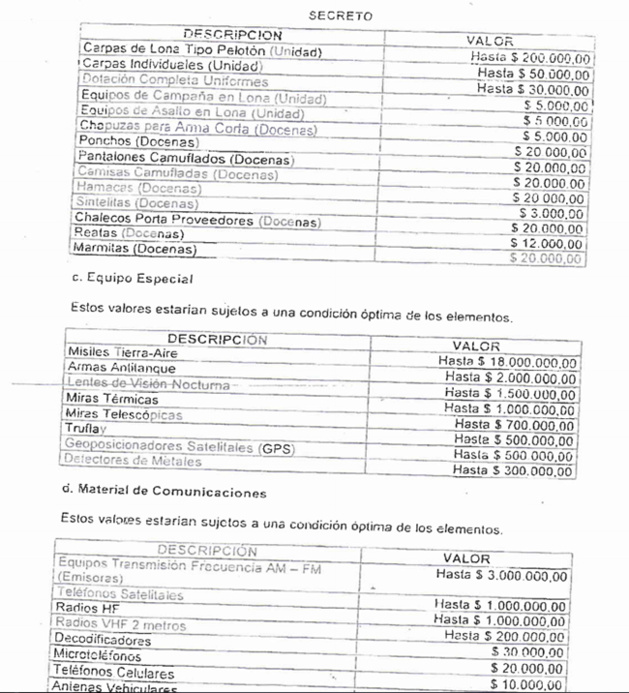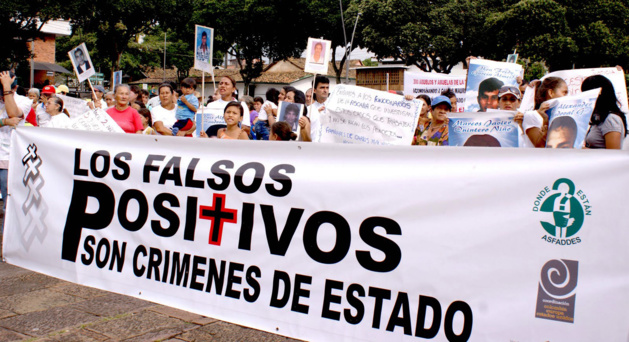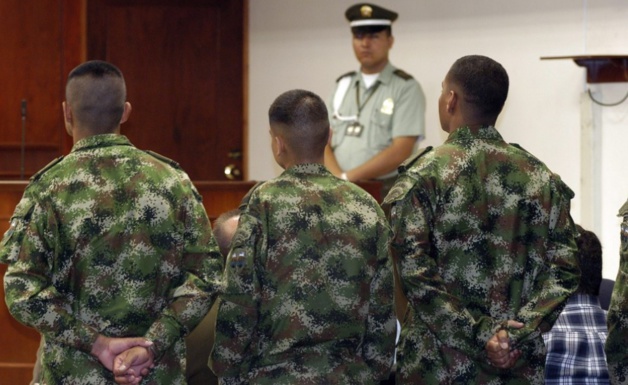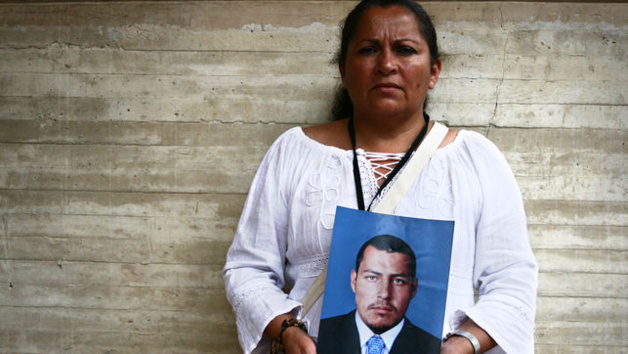
A mother showing the picture of her son, assassinated by the army. Credits : Emma Gascó
After having seen and heard many of the relatives of the victims in the past days, the general procurer called a press conference. It was his opportunity to defend the action of the public ministry in charge of the investigation while many are busy criticizing the anti-Semitic traits of the Colombian judiciary. His announcement confirmed the extent of the scandal within the state apparatus: more than 2,000 people are involved in the investigation, of which 1,573 are part of the army. While 800 have already been sentenced, it is now time to judge the responsibility of the military leaders. The case of the « false positives » is about more than a few isolated soldiers, it is now time to shed some light on a large system.
The explosion of the practice under Uribe
The extra-judicial executions are a key element in the history of the armed conflict in Colombia. The absence of an efficient judicial apparatus all over the territory or else the collusion among the regular army and the illegal armed groups might explain the importance of the phenomenon. Even though many civilians were killed in order to terrorize the population or obtain information, it is important to differentiate the case of the « false positives ». This expression concerns the people abducted by force, taken hostage and then assassinated by the national army. The latter were then dressed up as guerrillas in order to improve the statistics of the combat brigades. In the military language, one positive represents one enemy shot. These innocent civilians have thus received the appellation of « false positives ». As of 1994, a note of the CIA asserts that this practice is common within the Colombian army. It is however during the 2000’s that the highest number of cases has been counted.
In 2002, Álvaro Uribe was elected president of Colombia making the promise that he would militarily eradicate the guerrilla. He then set up his policy of « democratic security » that is characterized by a strong increase in the workforce and in the means made available to the armed forces. The Colombian armed conflict then reached its paroxysm: the clashes multiplied and the army used the help of the paramilitary troops to deploy on many territories.
This policy will not respect its democratic commitments and no mechanism allowing justice to verify law enforcement will be created. Impunity turns into the rule for the military and the excesses systematize. During the two terms of Álvaro Uribe, the quantity of « false positives » cases counted has risen by 154%. Nonetheless, the reasons for this increase remain explainable only by the lack of means of the judiciary.
Foreseeable consequences of a policy of reward
Since 2006 a severe increase of the number of civilian victims shot and presented by the army as guerrillas has been recorded. It is a direct consequence of the application of the ministerial decree n°029, kept secret at the time. The document, taken in 2005 by the Minister of Defence, Camilo Ospina, establishes, in a very precise way, a system of rewards granting money or permissions for each killed guerrilla. The body of a guerrilla was worth 3,800,000 Colombian Pesos, about 1,400 euros. Even the gear taken from the enemy resulted in a financial reward.
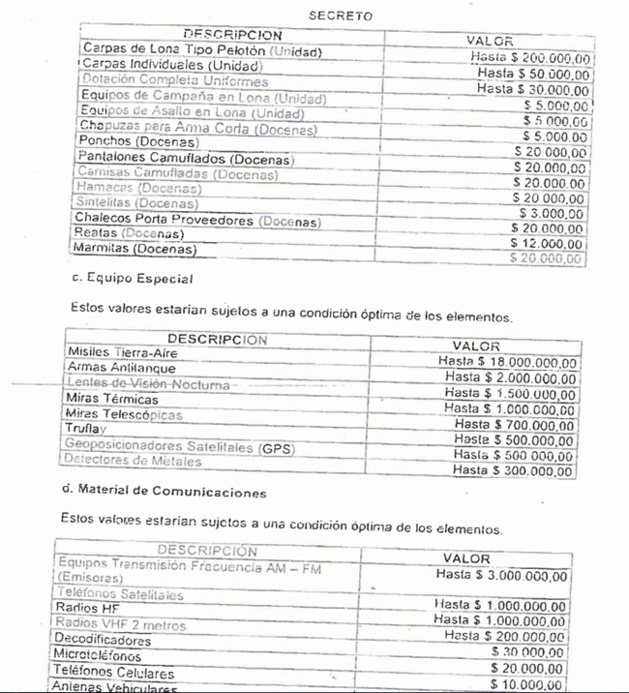
Beyond that kind of reward, it is also a way to judge the efficiency of the armed forces that showed where its limits were. In Colombia, each section has been assessed according to the number of enemies beaten down. Every day, the military radio diffused a ranking of the brigades according to the number of « positives » assassinated. To appear among the last ones was a shame. The consequence of this method is that it conditioned the soldiers to accept the need to kill.
The drifts will not be long in coming. Some militaries have called on intermediaries in order to recruit young men, considered as marginalized, inhabitants of the poorer neighbourhoods. Usually these people were offered a job outside the city. They were in reality taken by the military and then assassinated. The staging of these assassinations were always thorough, with simulations of confrontations and crossfires. An old soldier even claims that the ammunitions that were falsely used during the combats were then sold to armed groups. These practices were systematic until 2008, year when the scandal broke.
No direct judicial consequences
Even though the existence of such practices was strongly suspected, the scandal erupted only at the end of 2008 with the case of the disappearance of Soacha. Nineteen people, many of them minors living in a suburb of Bogota, were found dead hundreds of kilometese away from the city. A report of the army introduces them as a group of guerrillas shot down in combat. The families of the victims protest, the claim presented by the army does not make sense. Indeed, mistakes were made when disguising the bodies: the victims’ uniforms were brand new, some were boots of different sizes, etc.
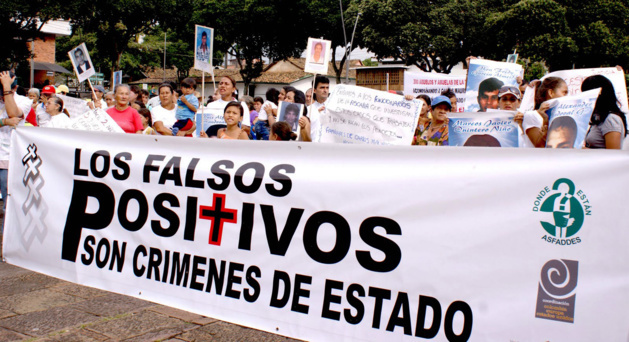
This event marked the end of the silence around these practices. Just like the organization of the mothers of the disappearance of Soacha, the civil society is mobilizing to ask for truth. The State then interrupted to bury the story. The militants demanding the opening of investigations are constantly threatened, some are even, in their turn, assassinated. This will not be sufficient to defeat their determination and, since this day, the revelations and the testimonies concerning the « false positives » multiplied.
The State was then forced to react. At the end of 2008, 25 service men were removed from their posts and the commander-in-chief of the land force, the general Mario Montoya, resigned. However the president, Uribe, refused to admit any responsibility. The blamed soldiers were presented as isolated cases, no in depth reflexion took place. In various cases, these soldiers weren’t even brought to justice. General Montoya was, for his part, appointed ambassador to the Dominican Republic. In 2010, the UN estimated that 98,5% of the extra-judiciary execution cases remained unpunished in Colombia.
Hope of justice for the relatives of the victims?
It was in 2010 that a fundamental change took place. Juan Manuel Santos, then Minister of Defence, succeeded Álvaro Uribe as President of the Republic. He rapidly differentiated himself from his predecessor by starting negotiations with the FARC. The ex-President then became his main political opponent. This divide among the old majority put an end to the obstacles preventing the opening of investigations about the excesses of the « democratic security ».
Over the course of the five last years, an increasing number of militaries became subject to an investigation about this affair. The 12th of April of 2015, the Procurer General Eduardo Montealegre proclaimed that 805 agents of the State, among which 785 are soldiers, have already been condemned. However, all these agents were only performers or people in charge of little. Nonetheless, the systematization of this practice shows that it was about a global phenomenon.
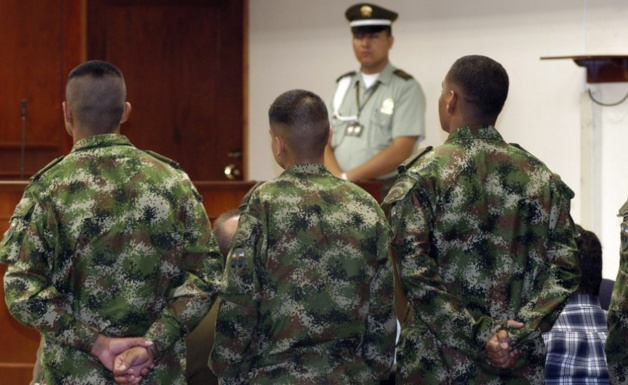
The investigation cannot, then, be limited to these scapegoats. Now, it is important to judge the responsibility of the high ranked of the army. Eduardo Montealegre thus claimed that he would « make a substantial decision about the case of the 22 generals » before the end of the year. A decision that could mark a turning point in Colombian history as, despite the many exactions by the army, no general was ever condemned.
However, the relatives of the victims stay careful about the conclusions of that investigation. In many cases, the situation barely evolved: some families still cannot retrieve the bodies of the assassinated, and the reparation’s requests remain dead letters.
It is even hard to consider that these practices fully belong to the past. In 2014, for example, four people among which a 14 years old teenager were shot dead and presented by the army as guerrillas. Their whole village contradicts this version. For now, no proof has been given by the State. Very recently, the 10th of February 2015, a man was assassinated by law enforcement, in the same conditions.
Today, peace talks started in La Havana between the government and the FARC representatives allows us to hope that this is the end of the Colombian armed conflict that already caused 220 000 dead and 5,3 million displaced. Regularly, the Colombian government calls upon the FARC leaders to meet their responsibilities about the suffering inflicted to civilians. However, this peace process will succeed only if both parties accept to admit their wrongs and if they finally submit to the judiciary. To mourn this 50-years old conflict, the Colombian people need to recognize the realities of its recent past. And this will not occur without the will of the State.















